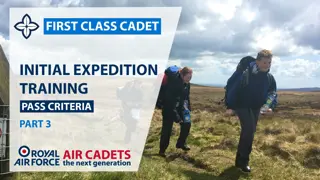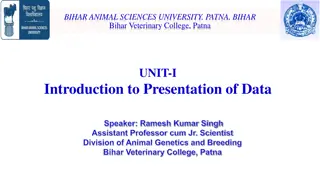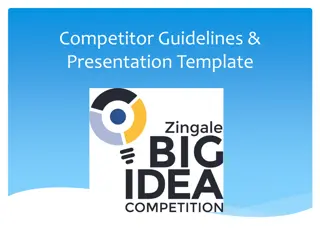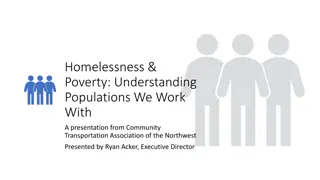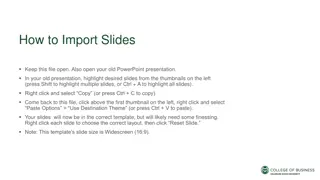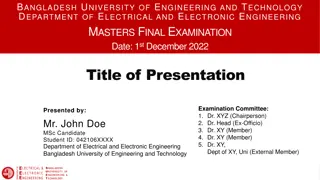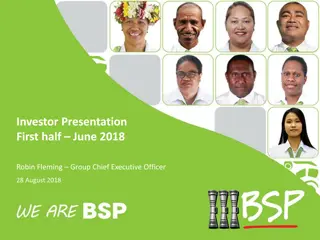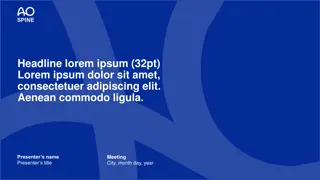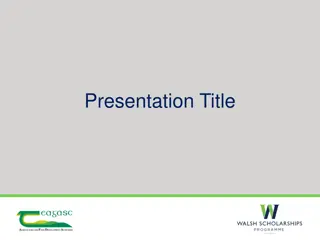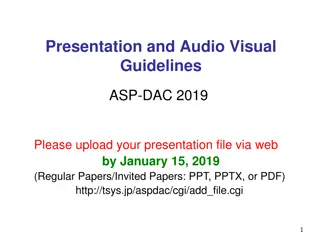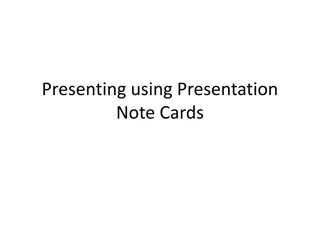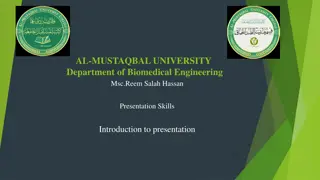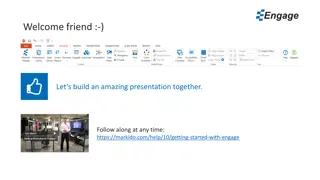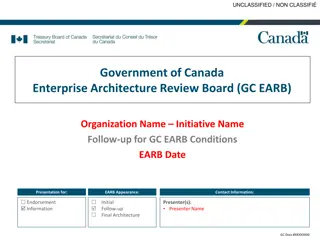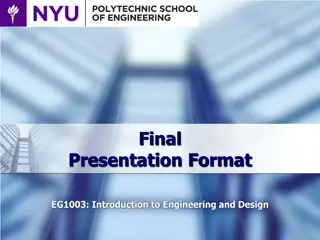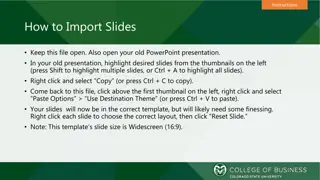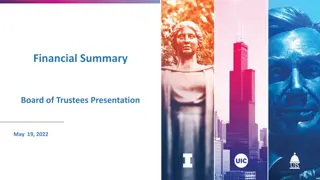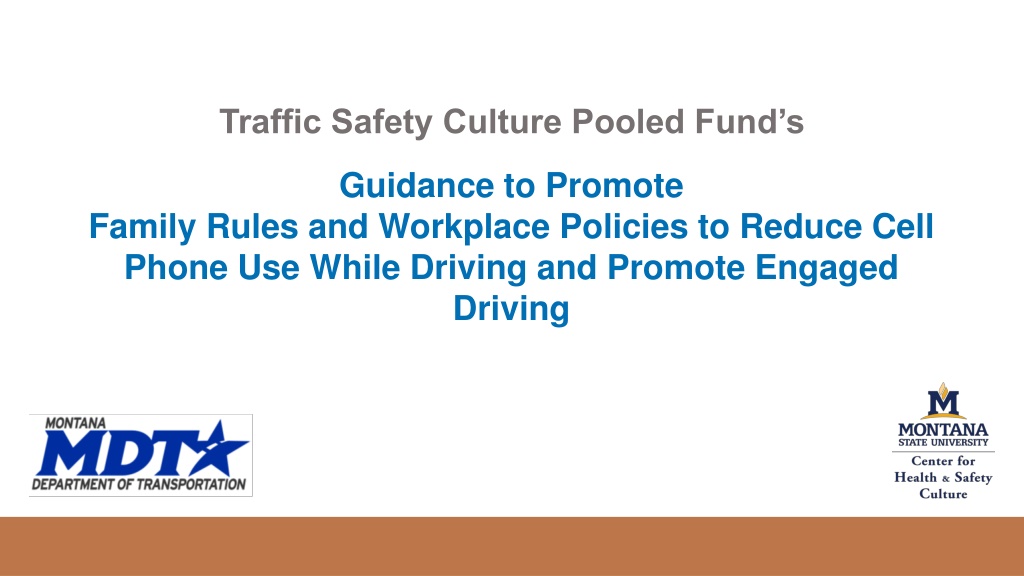
Promoting Engaged Driving: Strategies for Families and Workplaces
"Explore strategies to promote engaged driving in families and workplaces, addressing cell phone use while driving. Learn how beliefs and expectations influence behaviors, and discover effective strategies to foster safer driving habits. Join the initiative for a safer road culture."
Download Presentation

Please find below an Image/Link to download the presentation.
The content on the website is provided AS IS for your information and personal use only. It may not be sold, licensed, or shared on other websites without obtaining consent from the author. Download presentation by click this link. If you encounter any issues during the download, it is possible that the publisher has removed the file from their server.
E N D
Presentation Transcript
Traffic Safety Culture Pooled Funds Guidance to Promote Family Rules and Workplace Policies to Reduce Cell Phone Use While Driving and Promote Engaged Driving
Objectives Objectives Identify strategies for families and workplaces that foster engaged driving. Specifically, the project will seek to answer the following questions: How do expectations within families and workplaces influence cell phone use while driving? What beliefs need to shift to change these expectations and increase engaged driving? What are potentially effective strategies (and associated messages) to promote engaged driving within families and workplaces to reduce cell phone use?
Distracted vs. Engaged Driving Distracted vs. Engaged Driving Engaged driving means the driver s full attention is on the driving task. Distractions include any activity that takes the driver s attention away from the task of driving. using a cell phone to send a text message, talk, browse the internet or social media, or view photos or videos using a navigation system eating or drinking grooming tasks like applying makeup or brushing your teeth talking to passengers adjusting music reaching for objects focusing on people or pets in your vehicle putting a cell phone down or out of reach setting your navigation system or checking maps or directions before you begin driving, or pulling over when you do so avoiding eating, drinking, or grooming tasks asking passengers to limit their conversations to help you remain focused assuring your radio/entertainment devices are set before driving pulling over before tending to another person or pet in the vehicle
Methods Methods Developed surveys to assess Distracted driving behaviors and associated beliefs, Engagement in steps to reduce distracted driving Recruited participants online who were either Parents who had a teen driver in the family OR Supervisors who supervised employees who drove for work Conducted analyses to understand The beliefs associated with distracted driving The beliefs associated with establishing (or clarifying) rules and expectations about distracted driving
Methods Methods (continued) Developed guidance on language parents and supervisors could use based on the results of the surveys Recruited parents and supervisors to react to the example language and to messages to promote the guidance
Findings Findings - - Parents Predictors of distracted driving among parents were o Attitudes (perceptions of safety/danger about engaging in distracting behaviors) o Perceived injunctive norms (perception of acceptability by important others) o Perceived descriptive norms (perception about prevalence of distracted driving by others) o Perceived control (how easy/difficult to avoid) were all behaviors by parents Many parents indicated they had family rules about not having hand- held cell phone conversations or texting while driving However, far fewer parents indicated they had rules about not having hands-free cell phone conversations, not adjusting vehicle equipment, or not reaching for objects while driving. Predictors of parenting behaviors to reduce distracted driving o Behavioral beliefs (sense of importance about engaging in efforts to reduce distracted driving) o Perceived descriptive norms (perception of what most other parents are doing) o Perceived control (sense of comfort in engaging in conversations and establishing rules with their children) Parents
Findings Findings - - Supervisors Supervisors Predictors of distracted driving among supervisors were similar to parents Many reported engaging in distracting behaviors like having cell phone conversations, adjusting vehicle devices, or reaching for an object while driving. These risky behaviors (and beliefs supportive of distracted driving) were significantly more prevalent among those required to have a commercial driver s license (CDL). Many indicated they had a workplace policy or rule prohibiting cell phone use (conversations or texting) Fewer indicated they had policies about not adjusting vehicle equipment or reaching for an object
Key Take Key Take- -Aways Aways Parents provide an opportunity to reduce distracted driving and promote engaged driving by their teens The parents surveyed thought it was important To have conversations with their teens about distracted driving To establish clear expectations about what is acceptable and not acceptable while driving To check in with this child about whether they are using a cell phone or not while driving To encourage this child when they make good choices about not driving distracted And, the survey revealed parents need guidance to have these conversations.
Key Take Key Take- -Aways Aways Workplaces provide an opportunity to reduce distracted driving and promote engaged driving employees who drive for work The supervisors surveyed thought it was important To have conversations with those they supervise about distracted driving To clarify policies and expectations about what is acceptable and not acceptable while driving To check in with those they supervise to see if they are following the policies To encourage employees when they make good choices about not driving distracted And, supervisors need guidance to have these conversations.
Resources Resources Written Documents Family Conversations to Support Engaged Driving Workplace Conversations to Support Engaged Driving Resources to Promote Family Conversations Resources to Promote Workplace Conversations Summary Poster Final Report Visit https://www.mdt.mt.gov/research/projects/trafficsafety.shtml
Research Sponsor Research Sponsor Traffic Safety Culture Pooled Fund The Transportation Pooled Fund (TPF) Program allows federal, state, and local agencies and other organizations to combine resources to support transportation research studies. Participating Organizations: California DOT, Connecticut DOT, Georgia DOT, Idaho Transportation Department, Illinois DOT, Indiana DOT, Iowa DOT, Kansas DOT, Kentucky DOT, Louisiana DOT and Development, Michigan DOT, Minnesota DOT, Mississippi DOT, Nevada DOT, Texas DOT, Utah DOT, Vermont Agency of Transportation, and Washington State DOT Managed by: Sue Sillick, Research Programs Manager Montana Department of Transportation 2701 Prospect Avenue, PO Box 201001 Helena, MT 59620-1001 Office: 406.444.7693 E-mail: ssillick@mt.gov www.mdt.mt.gov/research/
Disclaimers, Printing, Alternative Format Disclaimers, Printing, Alternative Format DisclaimerThis document is disseminated under the sponsorship of the Montana Department of Transportation (MDT) and the United States Department of Transportation (USDOT) in the interest of information exchange. The State of Montana and the United States assume no liability for the use or misuse of its contents. The contents of this document reflect the views of the authors, who are solely responsible for the facts and accuracy of the data presented herein. The contents do not necessarily reflect the views or official policies of MDT or the USDOT. The State of Montana and the United States do not endorse products of manufacturers. This document does not constitute a standard, specification, policy or regulation. Printing This document is printed at state expense. Information on the cost of producing this publication may be obtained by contacting the Department of Administration. Alternative Format MDT attempts to provide accommodations for any known disability that may interfere with a person participating in any service, program, or activity of the Department. Alternative accessible formats of this information will be provided upon request. For further information, call 406/444.7693, TTY 800/335.7592, or Montana Relay at 711.
For more information For more information CONTACT US EMAIL: MAIL@CHSCULTURE.ORG PHONE: (406) 994-7873 #CHSCulture www.chsculture.org



